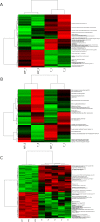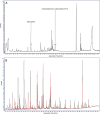Oyster reproduction is affected by exposure to polystyrene microplastics
- PMID: 26831072
- PMCID: PMC4780615
- DOI: 10.1073/pnas.1519019113
Oyster reproduction is affected by exposure to polystyrene microplastics
Abstract
Plastics are persistent synthetic polymers that accumulate as waste in the marine environment. Microplastic (MP) particles are derived from the breakdown of larger debris or can enter the environment as microscopic fragments. Because filter-feeder organisms ingest MP while feeding, they are likely to be impacted by MP pollution. To assess the impact of polystyrene microspheres (micro-PS) on the physiology of the Pacific oyster, adult oysters were experimentally exposed to virgin micro-PS (2 and 6 µm in diameter; 0.023 mg·L(-1)) for 2 mo during a reproductive cycle. Effects were investigated on ecophysiological parameters; cellular, transcriptomic, and proteomic responses; fecundity; and offspring development. Oysters preferentially ingested the 6-µm micro-PS over the 2-µm-diameter particles. Consumption of microalgae and absorption efficiency were significantly higher in exposed oysters, suggesting compensatory and physical effects on both digestive parameters. After 2 mo, exposed oysters had significant decreases in oocyte number (-38%), diameter (-5%), and sperm velocity (-23%). The D-larval yield and larval development of offspring derived from exposed parents decreased by 41% and 18%, respectively, compared with control offspring. Dynamic energy budget modeling, supported by transcriptomic profiles, suggested a significant shift of energy allocation from reproduction to structural growth, and elevated maintenance costs in exposed oysters, which is thought to be caused by interference with energy uptake. Molecular signatures of endocrine disruption were also revealed, but no endocrine disruptors were found in the biological samples. This study provides evidence that micro-PS cause feeding modifications and reproductive disruption in oysters, with significant impacts on offspring.
Keywords: energy allocation; microplastic; oyster; reproduction.
Conflict of interest statement
The authors declare no conflict of interest.
Figures






Comment in
-
Marine microplastics spell big problems for future generations.Proc Natl Acad Sci U S A. 2016 Mar 1;113(9):2331-3. doi: 10.1073/pnas.1600715113. Epub 2016 Feb 22. Proc Natl Acad Sci U S A. 2016. PMID: 26903632 Free PMC article. No abstract available.
-
Microplastic exposure studies should be environmentally realistic.Proc Natl Acad Sci U S A. 2016 Jul 19;113(29):E4121-2. doi: 10.1073/pnas.1606615113. Epub 2016 Jul 12. Proc Natl Acad Sci U S A. 2016. PMID: 27407153 Free PMC article. No abstract available.
References
-
- Rochman CM, et al. Policy: Classify plastic waste as hazardous. Nature. 2013;494(7436):169–171. - PubMed
-
- Jambeck JR, Geyer R, Wilcox C, et al. Plastic waste inputs from land into the ocean. Science. 2015;347(6223):768–771. - PubMed
-
- Arthur C, Baker J, Bamford H, editors. 2009. Proceedings of the International Research Workshop on the Occurrence, Effects, and Fate of Microplastic Marine Debris. September 9–11, 2008. NOAA Technical Memorandum NOS-OR&R-30. p 530.
-
- Costa MF, et al. On the importance of size of plastic fragments and pellets on the strandline: a snapshot of a Brazilian beach. Environ Monit Assess. 2010;168(1-4):299–304. - PubMed
Publication types
MeSH terms
Substances
LinkOut - more resources
Full Text Sources
Other Literature Sources
Molecular Biology Databases

